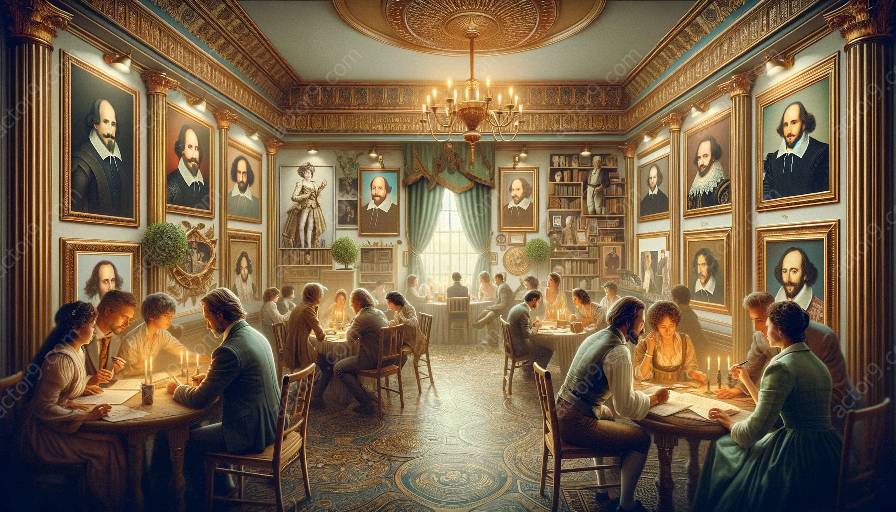Acting is an art form that has evolved over centuries, and one of the most significant periods in its development is the Elizabethan era of Shakespearean theater. Comparing Shakespearean and contemporary acting styles provides valuable insight into the changes in theatrical performances and the influence of different acting methodologies on stage and on screen.
Shakespearean Acting Style
During the time of William Shakespeare, acting was characterized by a heightened emphasis on language, rhetoric, and dramatic expression. The actors of this era had to command attention with their voices and physical presence, as the theatrical productions often lacked elaborate sets and special effects. The actors were required to project their voices and emote using a blend of poetry and prose, delivering powerful performances to captivate audiences.
One key aspect of Shakespearean acting style is the use of iambic pentameter, a rhythm that influenced the delivery of lines and the overall tempo of the plays. Actors employed a heightened sense of articulation and vocal dexterity to convey the complexities of Shakespeare's language and dialogue.
Moreover, the theater spaces of the Elizabethan era, such as the Globe Theatre, demanded a dynamic performance style, as the actors had to engage with different sections of the audience, often without the aid of microphones or amplification.
Contemporary Acting Style
Fast forward to the present day, and contemporary acting styles have undergone significant changes due to the advent of technology, the proliferation of different theatrical genres, and the evolution of acting theory. Modern acting places greater emphasis on naturalism, psychological realism, and character development, leading to more subtle and nuanced performances.
Actors now draw from a wide range of techniques and methods, including Stanislavski's system, Strasberg's method, Meisner technique, and more. These approaches prioritize internalizing the character's emotions, motivations, and experiences, resulting in performances that feel authentic and relatable.
Furthermore, contemporary actors benefit from advanced stagecraft, special effects, and multimedia elements that enhance the overall theatrical experience. Film and television acting have also influenced the contemporary style, with close-up shots and intimate portrayals becoming integral to the craft of acting.
Comparison and Contrast
When comparing Shakespearean and contemporary acting styles, it is essential to recognize their respective strengths and characteristics. Shakespearean acting is known for its grandeur, poetic delivery, and larger-than-life theatricality, while contemporary acting focuses on psychological depth, emotional realism, and a more intimate connection with the audience.
However, despite these differences, there are common elements that transcend time and inform both styles. The emphasis on storytelling, the exploration of human nature, and the transformative power of performance are enduring features that unite Shakespearean and contemporary acting approaches.
The Study of Famous Shakespearean Actors
Understanding the distinction between Shakespearean and contemporary acting styles can be enriched by studying the renowned actors who have brought Shakespeare's characters to life on stage and screen. From the classical interpretations of Laurence Olivier and John Gielgud to the modern renditions by Kenneth Branagh and Judi Dench, the performances of these legendary actors provide invaluable insights into the evolving nature of acting.
By exploring the techniques, choices, and interpretations of famous Shakespearean actors, aspiring performers gain a deeper understanding of the principles that drive compelling portrayals. The study of famous Shakespearean actors serves as a bridge between the historical legacy of Shakespearean theater and the evolving practices in contemporary acting.
Shakespearean Performance in Context
The influence of Shakespearean acting styles extends beyond individual performances and actors; it encompasses the broader context of Shakespearean performance. Whether in traditional stage productions, innovative reinterpretations, or adaptations for film and television, the legacy of Shakespearean performance continues to inspire and challenge actors and directors.
Shakespearean performance serves as a testament to the enduring power of the playwright's works, as well as a canvas for experimentation and reinterpretation. The convergence of different acting styles and directorial visions in Shakespearean performances offers a rich tapestry of artistic expression, showcasing the adaptability and timelessness of Shakespeare's plays.

























